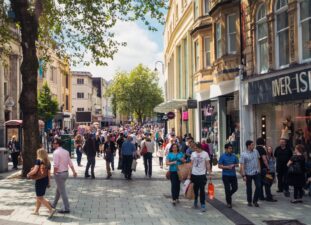Two dividend shares investors should consider buying are SSE (LSE: SSE) and Hargreaves Lansdown (LSE: HL.). Here’s why.
Green energy
SSE is one of the largest gas and electricity providers in the UK, which gives it defensive traits. After all, everybody needs gas and electricity. This defensive ability should keep performance relatively stable to boost investor returns.
As I write, SSE shares are trading for 1,597p. They are up 8% over a 12-month period, as they were trading for 1,478p at this time last year. However, since May, SSE shares have dropped 15% from 1,900p to current levels. Soaring inflation and rising interest rates have hampered many dividend shares.
Rising interest rates is my biggest concern for SSE, and the primary reason why its shares have fallen. This is due to its current debt levels. When rates rise, servicing debt can be costlier and can impact a balance sheet and returns. Many dividend shares face this risk currently.
SSE’s position on renewable energy could propel the shares upwards. The transition towards green alternatives is ramping up. SSE is at the forefront of this movement and it is looking to boost its green output by triple the current amount by 2031. It will do this by investing in infrastructure such as offshore wind farms. This could help boost performance and returns.
SSE’s dividend yield currently stands at just over 6%. This is higher than the FTSE 100 average of 3.8%. However, I do understand dividends are never guaranteed.
Finally, SSE shares look good value for money right now on a price-to-earnings ratio of close to 10.
Investment management
Hargreaves Lansdown shares have historically looked quite expensive. This is no longer the case, which makes them look like a great option, in my opinion.
As I write, Hargreaves shares are trading for 708p. They’re down 7% over a 12-month period from 765p at this time last year. However, since February, when macroeconomic volatility began to impact the market, Hargreaves shares have fallen 25% from 944p to current levels. Over a five-year period, they’re down 60%.
It has only taken a pandemic, a market crash, macroeconomic volatility, and geopolitical events to bring Hargreaves shares down to an enticing level. They currently look attractive on a price-to-earnings ratio of 12. This is lower than the FTSE 100 average of 14. Hargreaves dividend yield of 5.5% looks good and seems sustainable as well.
Macroeconomic volatility has caused an uncertain economic outlook and a cost-of-living crisis. Hargreaves’ performance and payouts could be hindered as customers have less cash to invest.
Forecasts point towards earnings growth for the full year for Hargreaves. A Q1 update released today looked good to me. Revenue increased by 13% to £184m compared to the same period last year. New business increased by £0.6bn and new customers increased by 8,000, leading to a total active customer base of 1.8m.
Hargreaves may be one of a number of dividend shares that may experience turbulence before markets recover. Its current valuation and position in the market make it an attractive option right now.








